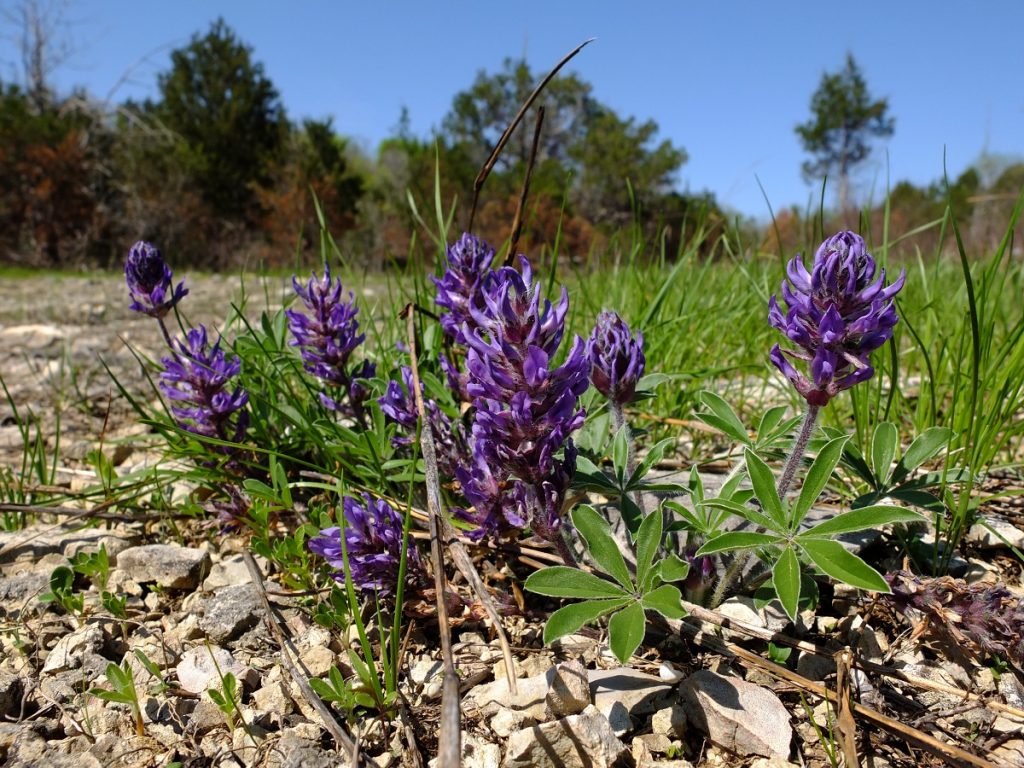
Not much is written about the Nashville breadroot (Pediomelum subacaule). It’s listed in a few field guides as a plant with an edible root, but that’s about it so far as I can find. The plant seems to be very under-studied. There is no ethnobotanical literature specifically related to this species. My personal experiences with it suggest this to be a highly important plant, with further investigations warranted.
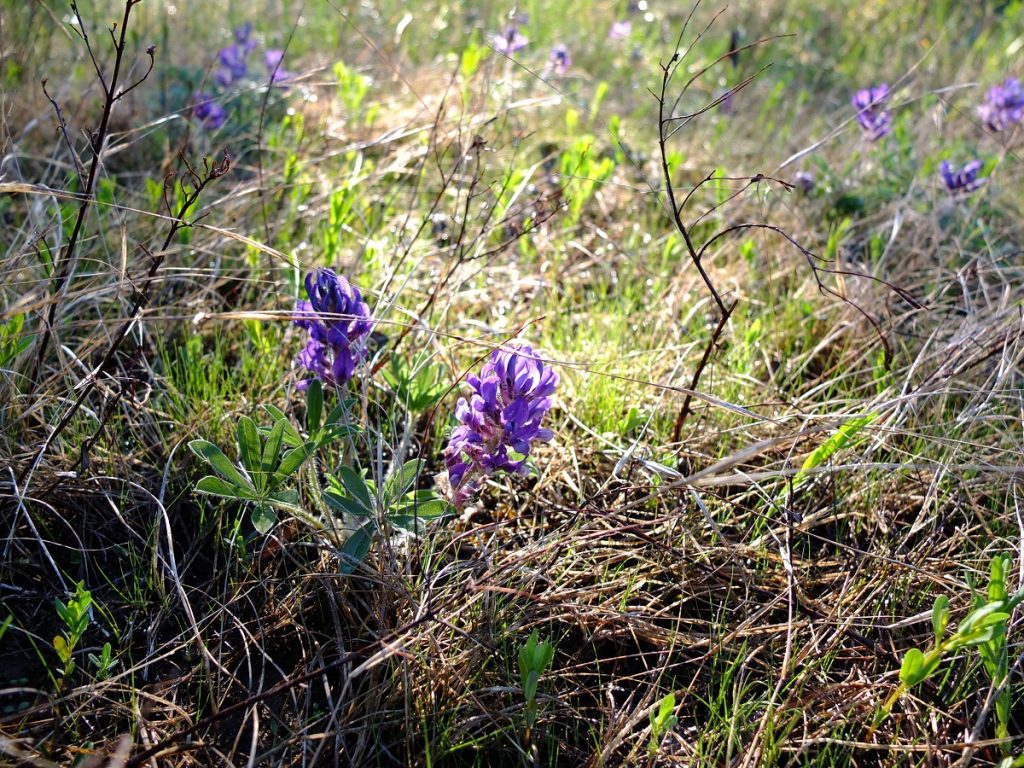
Nashville breadroot (Pediomelum subacaule) begins blooming in early April in the cedar glades with a center of distribution around middle Tennessee. The plant can also be found in cedar glades in nearby Georgia and Alabama. It takes the common name from its more well-known, larger sibling, the Indian breadroot or prairie turnip (Pediomelum esculentum). The Indian breadroot was an important first foods root to indigenous groups of the Great Plains. Known as timpsula to the Lakota, it was so important that they named the month of June after it: tinpsila itkahca wi, meaning the moon when breadroot is ripe. I have used the information on the Indian breadroot, Pediomelum esculentum, as a guide to understanding the Nashville breadroot from an ethnobotanical perspective, compensating for the dearth of literature regarding this specific plant.
The genus Pediomelum, in the bean family (Fabaceae), is a large group containing many geophytic plants with edible starchy roots. Additional examples include Pediomelum cuspidatum, P. hypogaeum, P. megalanthum, P. californicum, P. castoreum, P. argophyllum, and more.
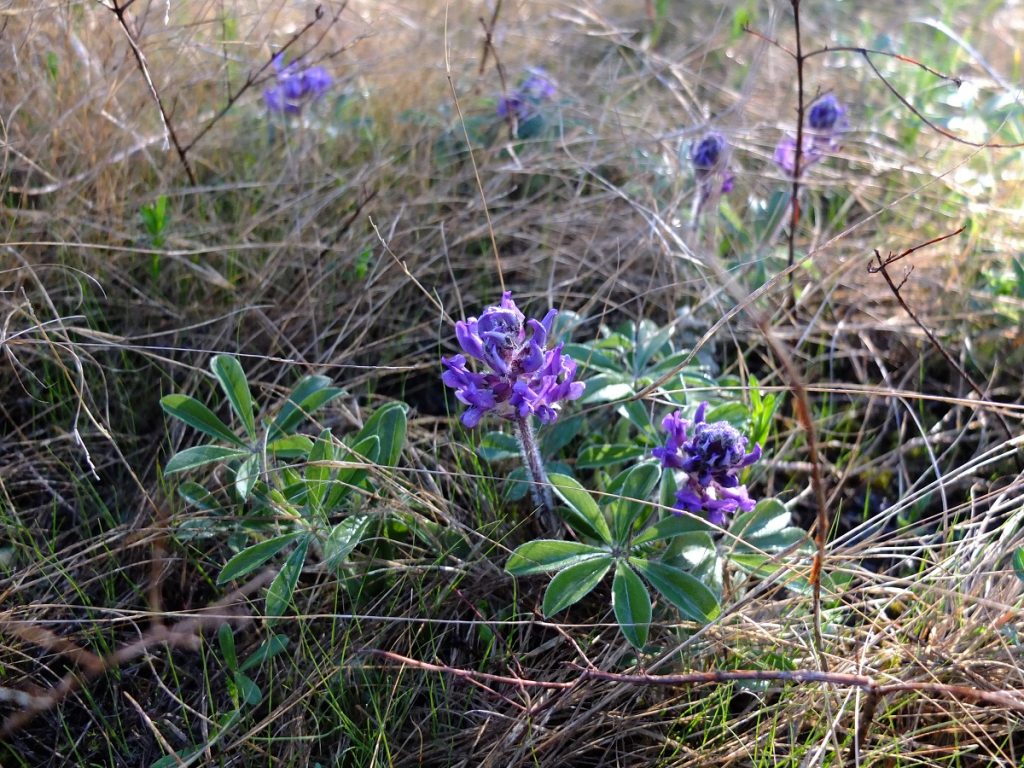
The Nashville Breadroot, also known commonly as white-rim scurf-pea, blooms for a month from about the beginning of April until the beginning of May. It is quite abundant in its native habitat in limestone cedar glades, where it can flower as thickly as clover blossoms in a meadow. It even grows thickly along the roadsides and in people’s yards. This is encouraging to witness! The flowers wither away around the beginning of May and the seeds ripen around the middle of the month.
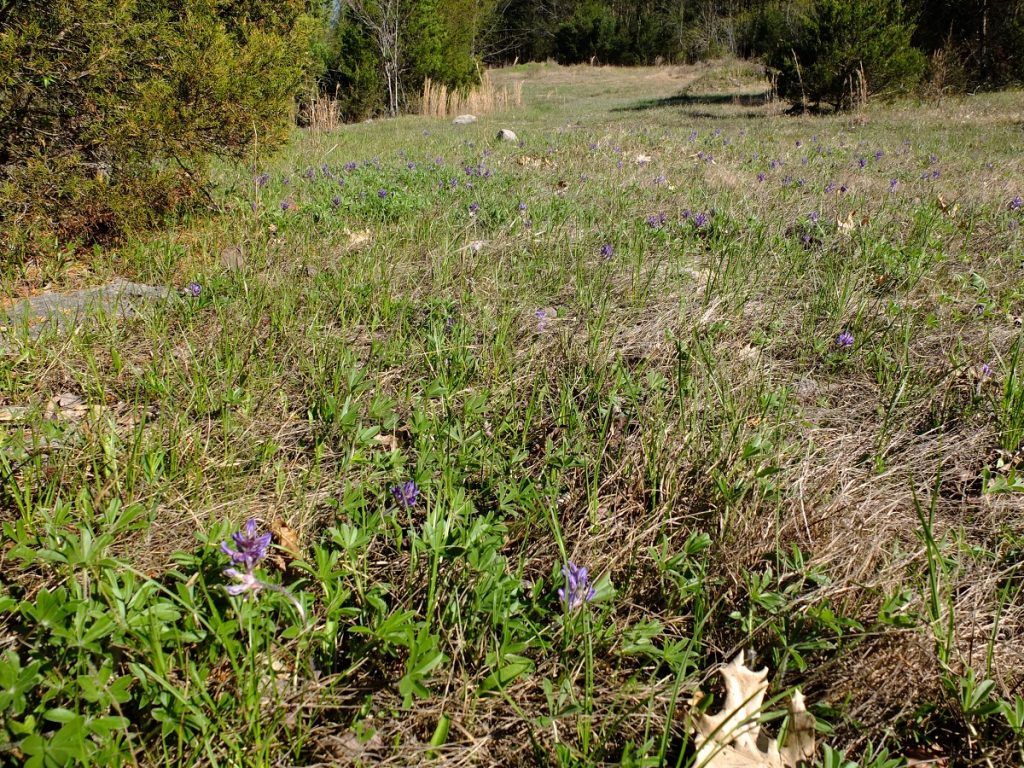
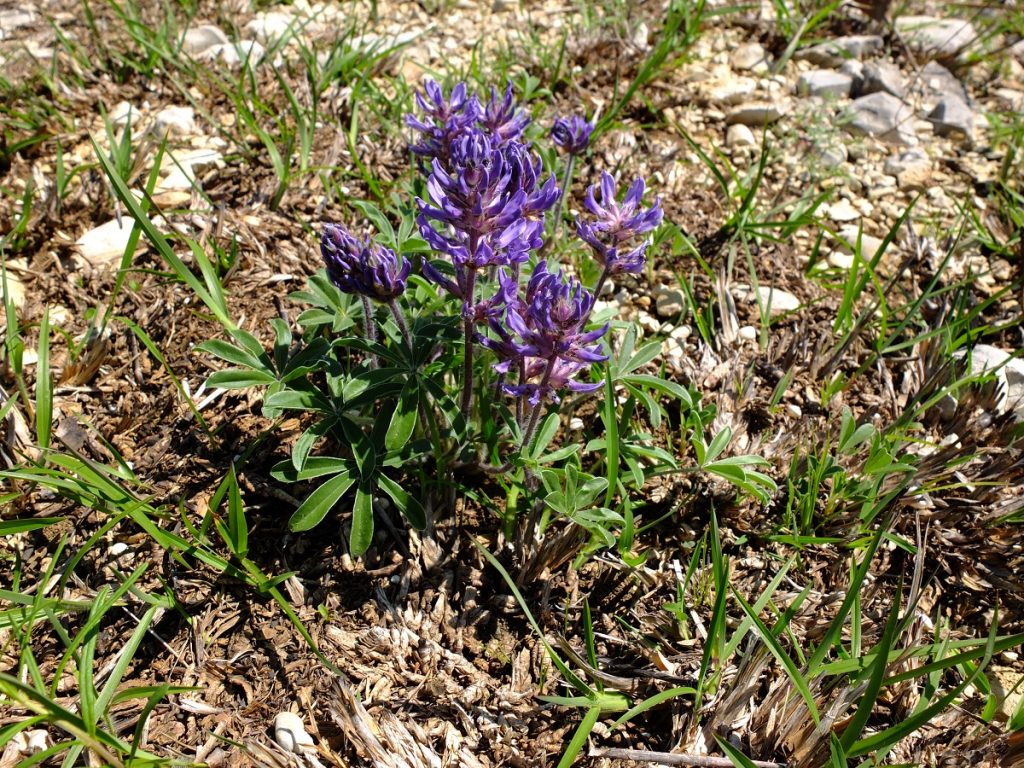
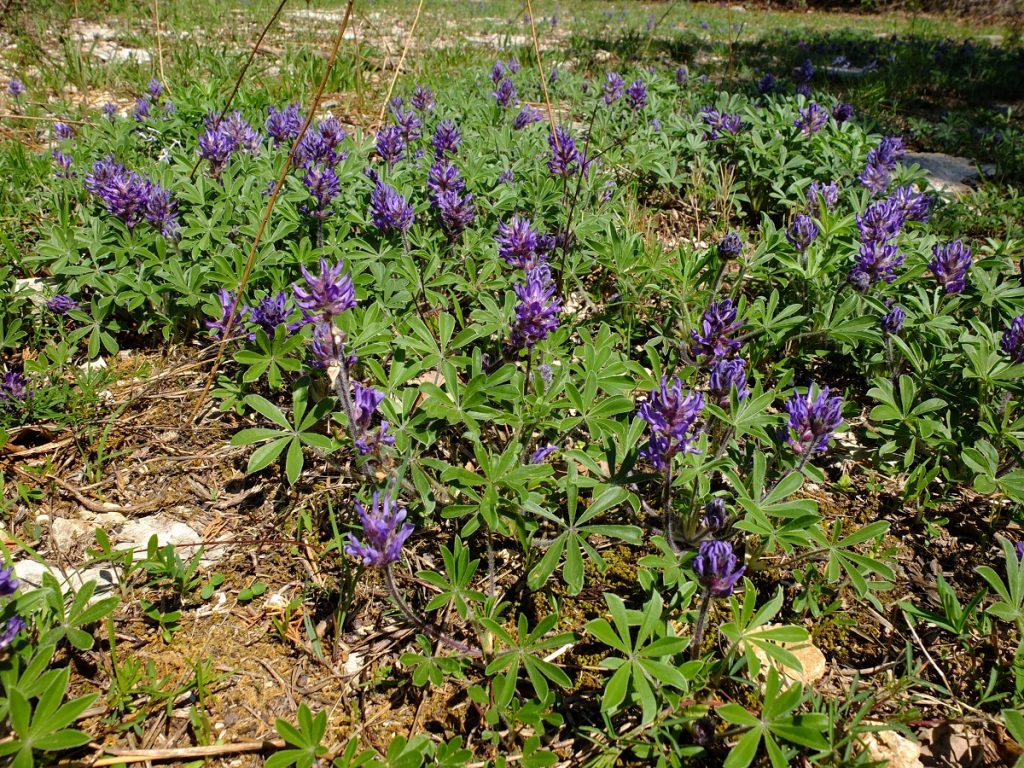
The Nashville breadroot’s main virtue from a human standpoint lies in its tuberous root, which is edible raw or cooked. The Pediomelum subacaule plant is a classic geophyte, meaning that it stores away nutrients underground in the form of starches, as a supply for times of difficult climate and drought. The thin soils and exposed bedrock characteristic of the limestone cedar glades result in hot and dry summertime conditions, and the Nashville breadroot’s life-cycle has evolved in accordance.
The Nashville breadroot begins to wake up from its summer dormancy around October, when the tuberous underground root begins to bud, much like a spudding potato. At this time there is a relative abundance of moisture in the cedar glades, and the roots begin soaking it up. The bud grows slowly throughout the winter, and then begins to accelerate as the soil begins to warm in March and the late winter and early spring rains come. The tuber is located about 3-6 inches underground, and so it is by March that the plant’s shoots and lupine-like foliage first emerge above the ground, ready to flower in the coming month of April. After flowering and setting seed in May, the plant dies back again entirely around June, hibernating underground to wait out the hot and dry summer months.
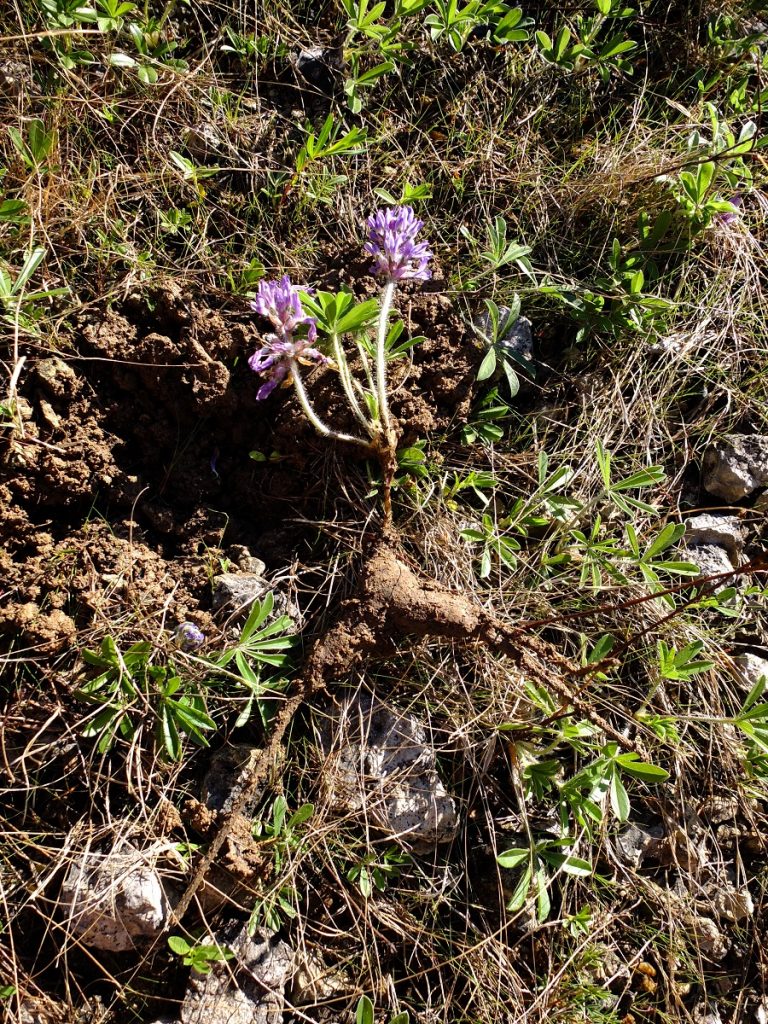
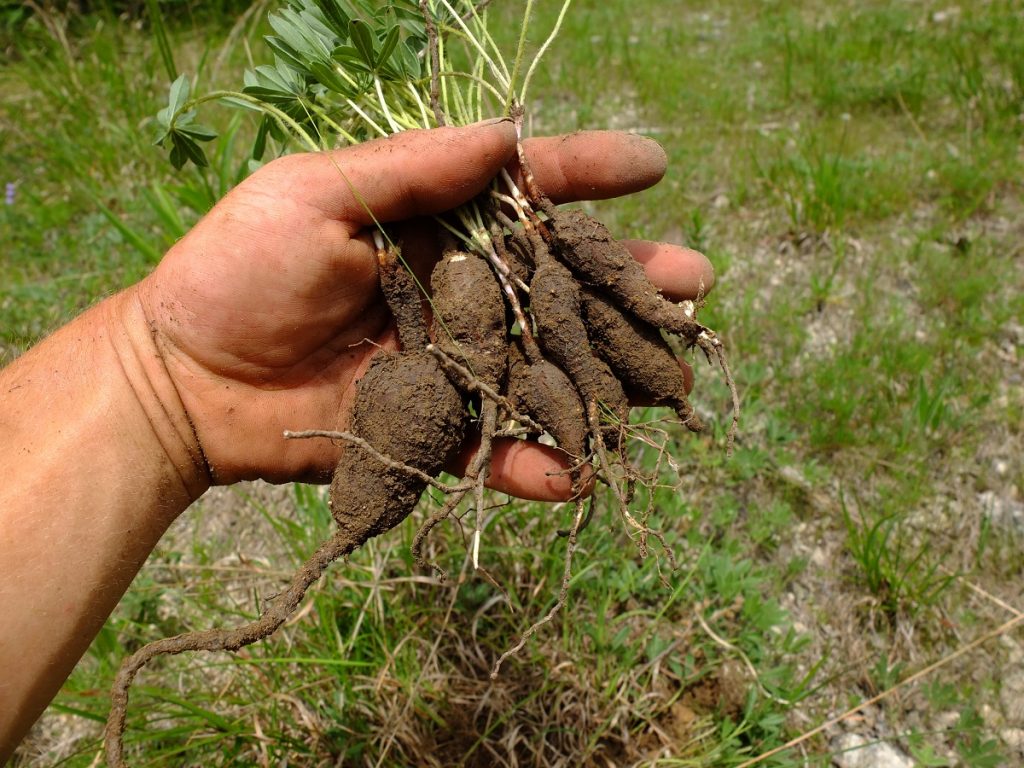
To consume the roots, first they must be peeled of their outer bark layers, revealing the white fleshy starch inside. The flavor, aroma, and texture is very much like coconut — delicious! Anecdotally, eating even just one raw root on an empty stomach left me feeling satiated, energized, and focused.
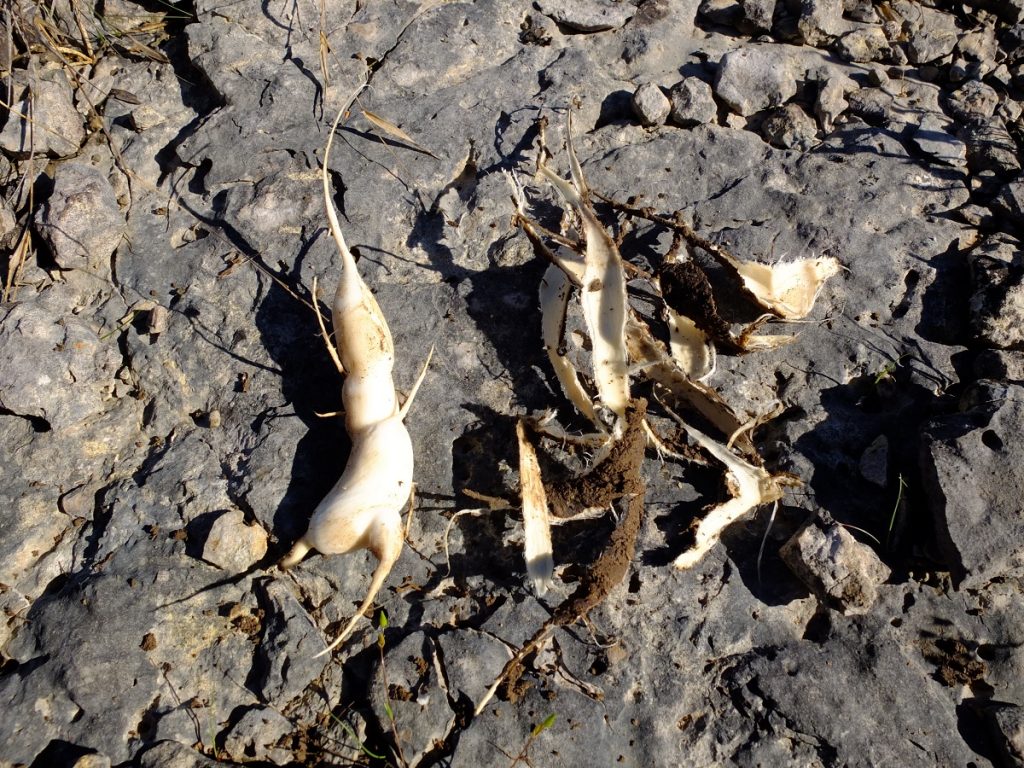
When dried, the roots may be stored indefinitely. The Lakota would braid the roots of their timpsula (Pediomelum esculentum) together into a chain. After drying, the roots could be ground into a flour for later use in baking bread and cakes or as a thickener for soups. Nashville breadroot may be treated and processed the same way.
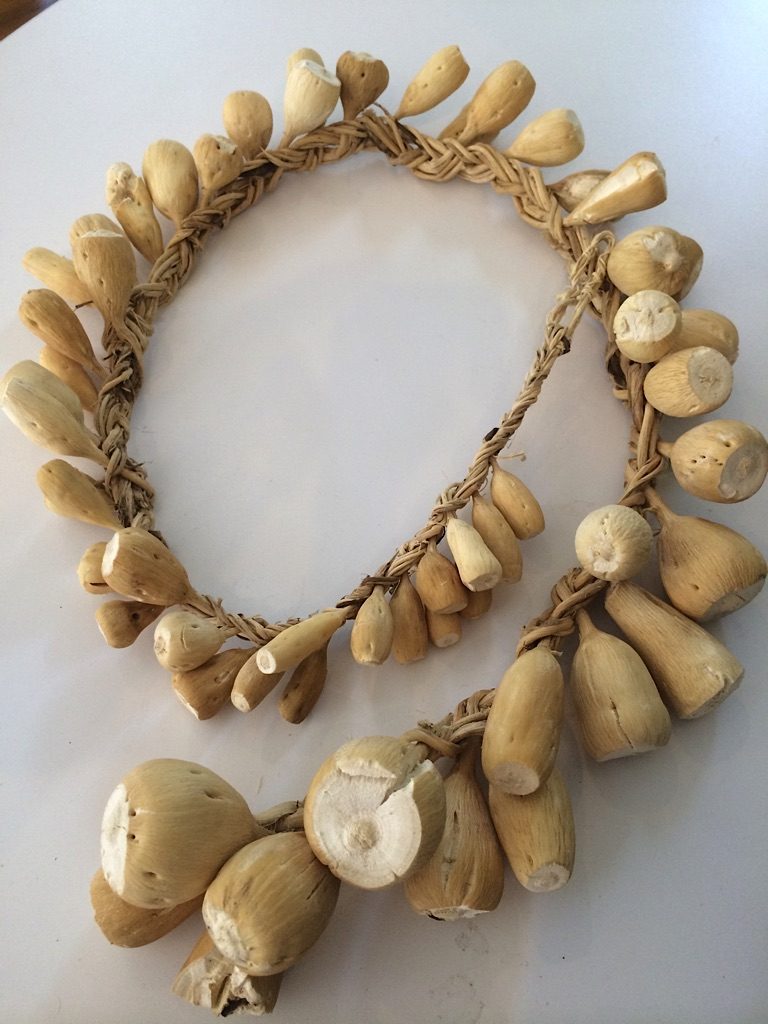
As the flowers die back, they dessicate and ripen their small, bean-like seeds.
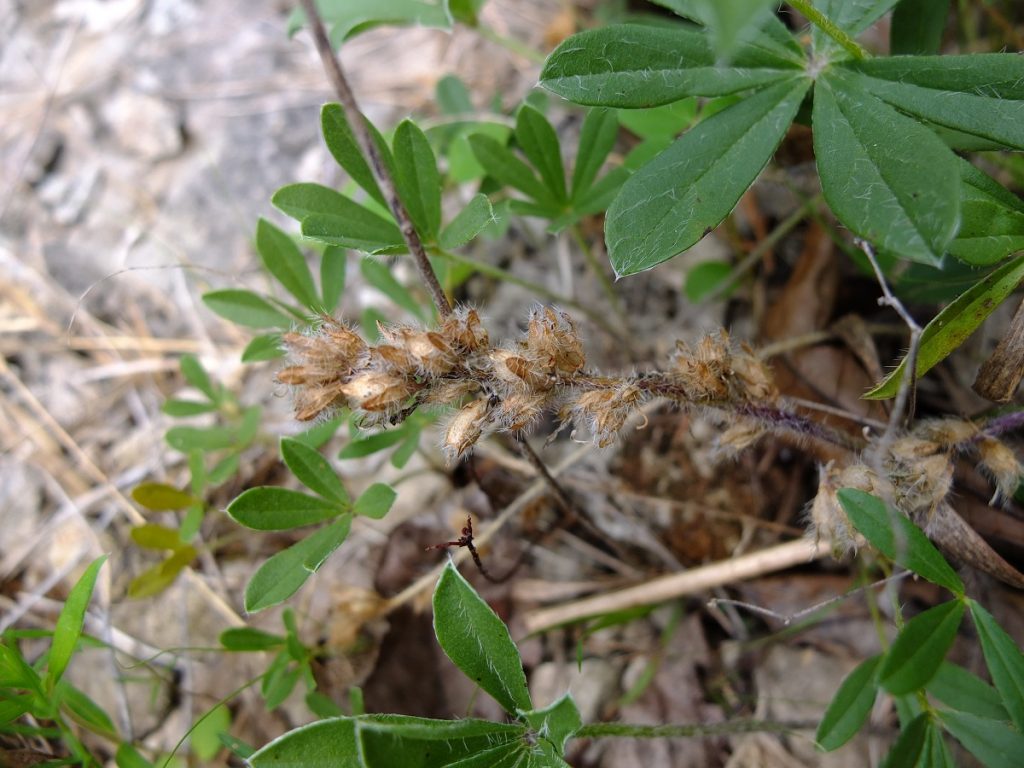
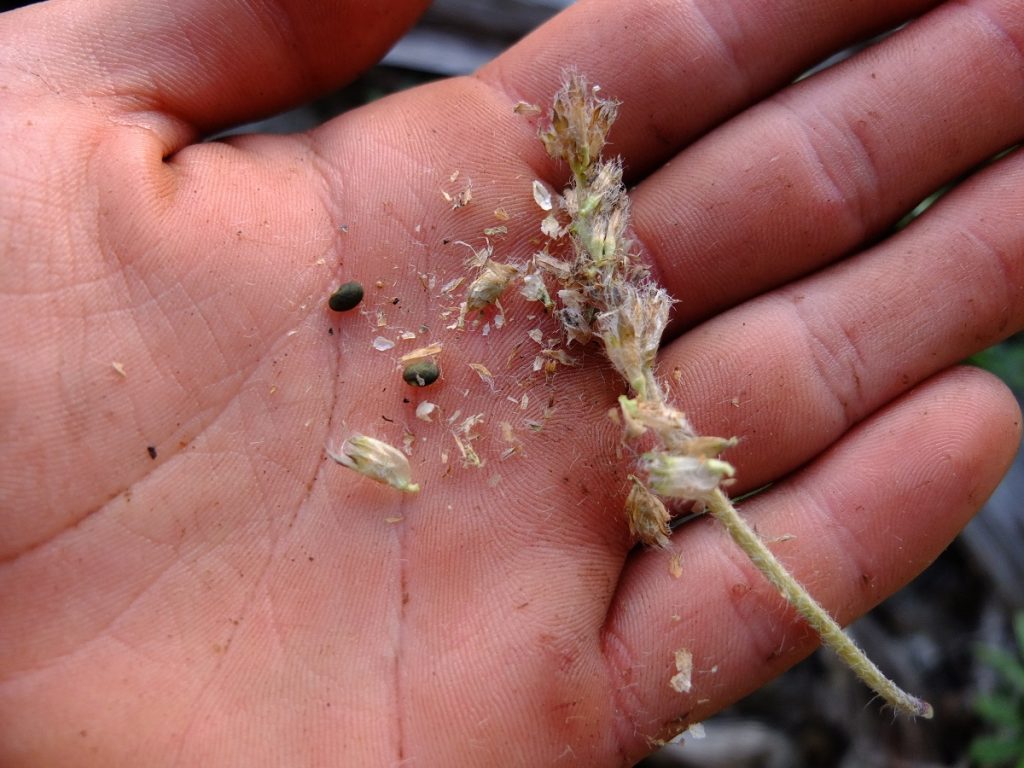
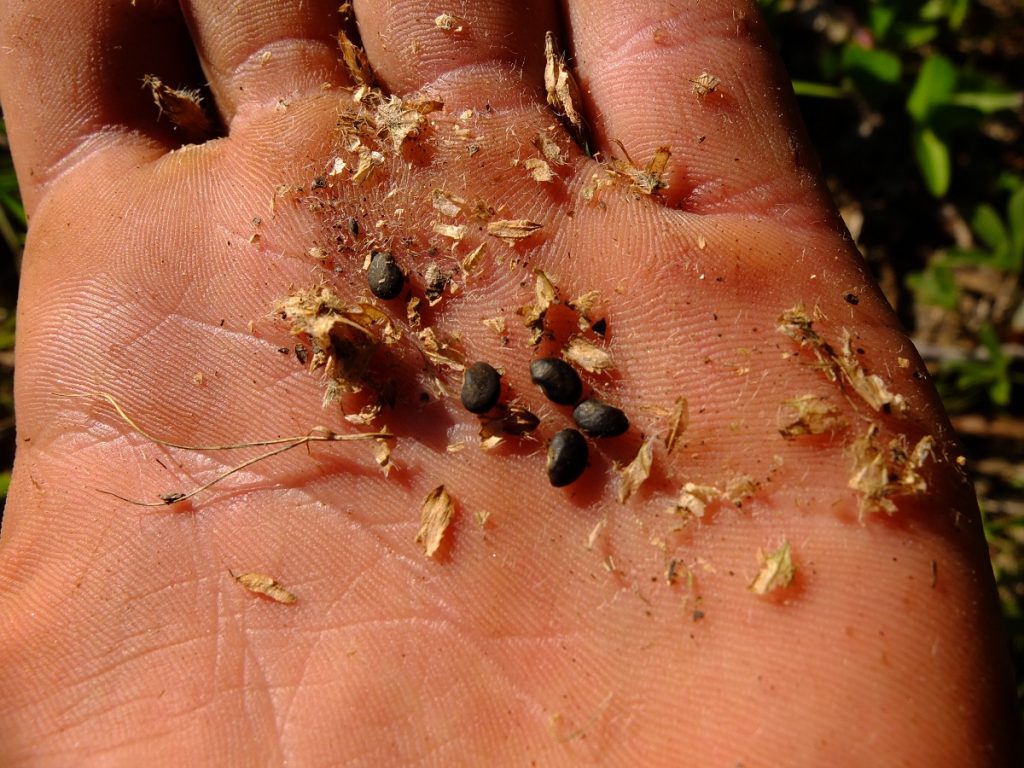
Once ripened, the seeds will store for many years dry. Germination seems to be fairly easy and straightforward, being dependent largely on temperature and amount of moisture in the soil. The seeds need no cold stratification.
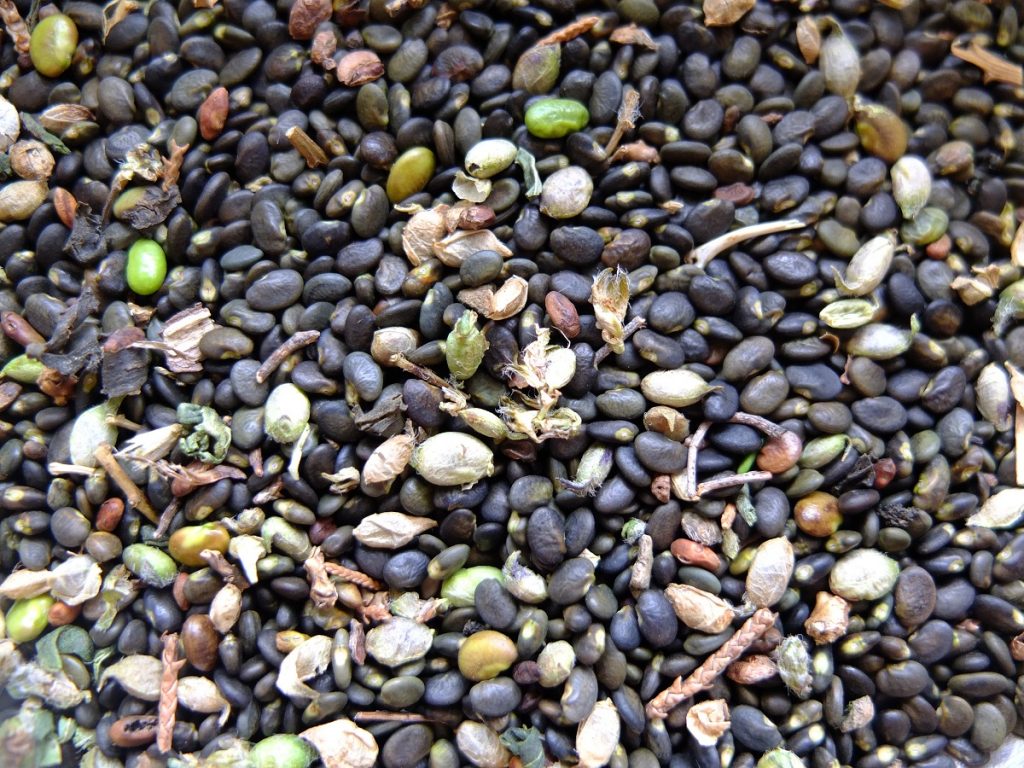
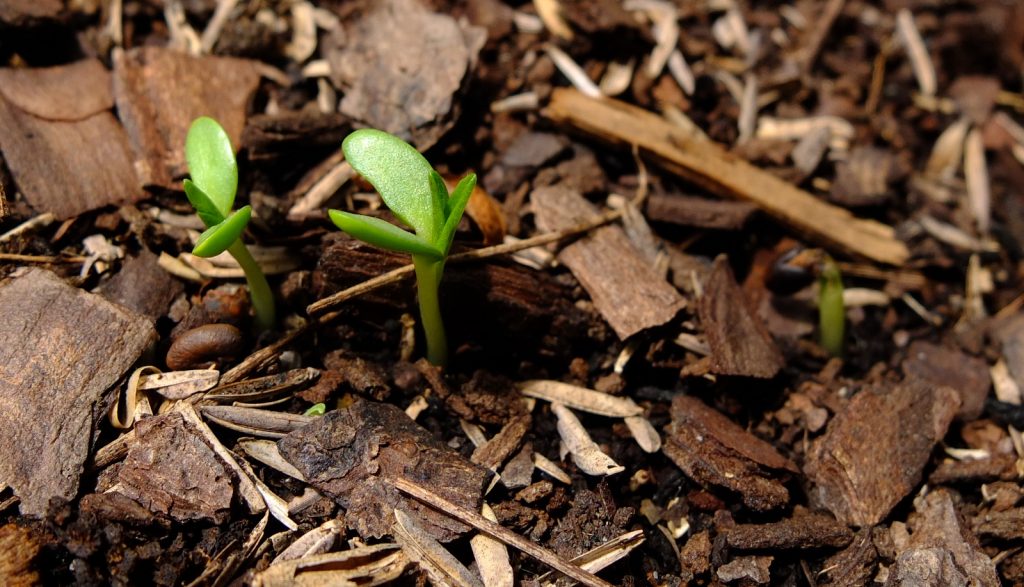
The Nashville breadroot is hardy down to zone 5, according to the USDA. Barry Glick of Sunshine Farm and Gardens in Renick, WV, reports the following:
“[I]t’s one of the easiest plants I’ve ever grown, takes full blistering sun, is perennial and long lived, has no insect pest or disease problems, is not invasive or aggressive and looks good all the growing season long, even when it’s not in flower. And……….it’s THAT blue blue blue.
[..]
Hardiness has never been an issue either. In the ground they’ve scoffed at below zero temps without a blanket of the white stuff or even a decent mulch. I’ve also left them in pots, unprotected all Winter and they’ve easily handled 9 degrees with no snow cover. Neither is heat tolerance a problem, as I have friends in Austin TX growing them now for several years and if you know anything about Austin besides the great music scene, believe me the heat is brutal.”
Nashville breadroot prefers to be dry in the summertime and moist in the winter, and with ample sunshine! Ideal environments outside of the native cedar glade environments could be the rocky scree on the sides of mountains, gravelly areas, serpentine barrens, other areas with exposed bedrock, sunny shortgrass prairie or meadow, and possibly even reclaimed parking lots or tennis courts (concrete mimics the landscape and climate of flatrock cedar glade barrens — how that’s for a post-industrial food system idea)!
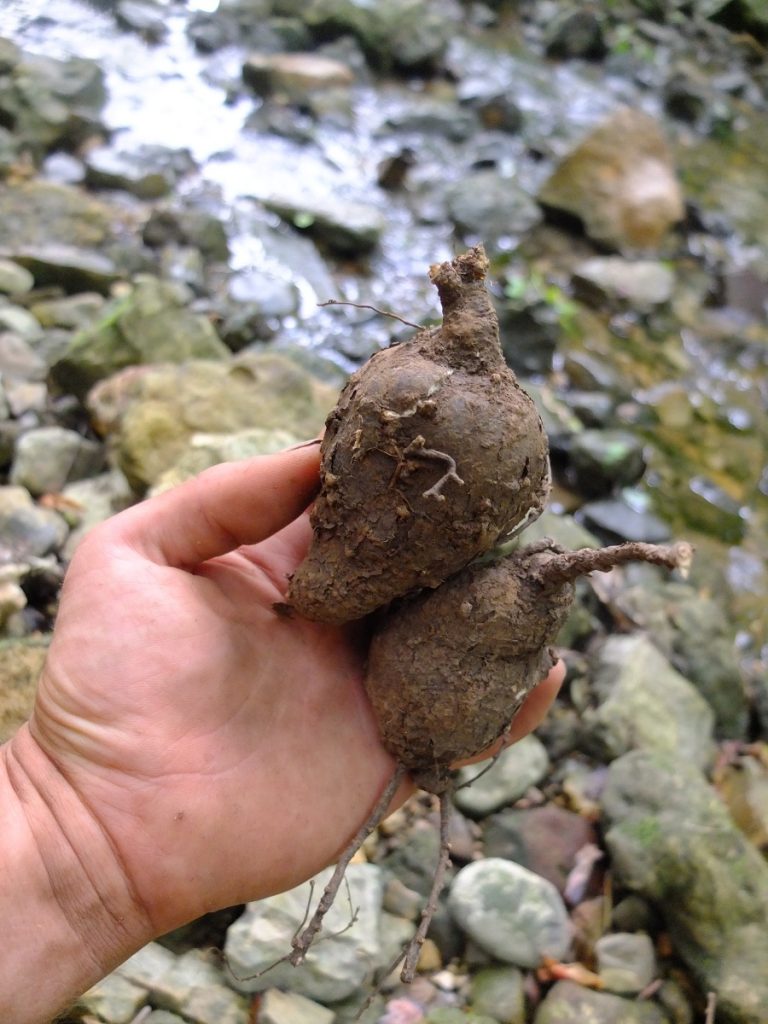
These large roots pictured above were growing in areas of the glades where growth was not impeded or re-directed by rocks. Here they found ample soil to live in. It is difficult to estimate the age of these roots without more information about growth rates, but my guess is at least 8-10 years old. While that may seem like a long time, when you consider that ramps take at least 7 years to mature, the Nashville breadroot doesn’t seem so impractical. Pediomelum subacaule is undoubtedly a long-lived perennial, and generally slow-growing, but its hardiness, and potential abundance in suitable habitat mean this is one plant we should be looking into as a food source. Especially when we consider the increasing drought and desertification caused by climate change. This is a drought-hardy, cold-hardy, no-input, no-effort food. I will be rewilding this one into a wide-range of suitable habitats.
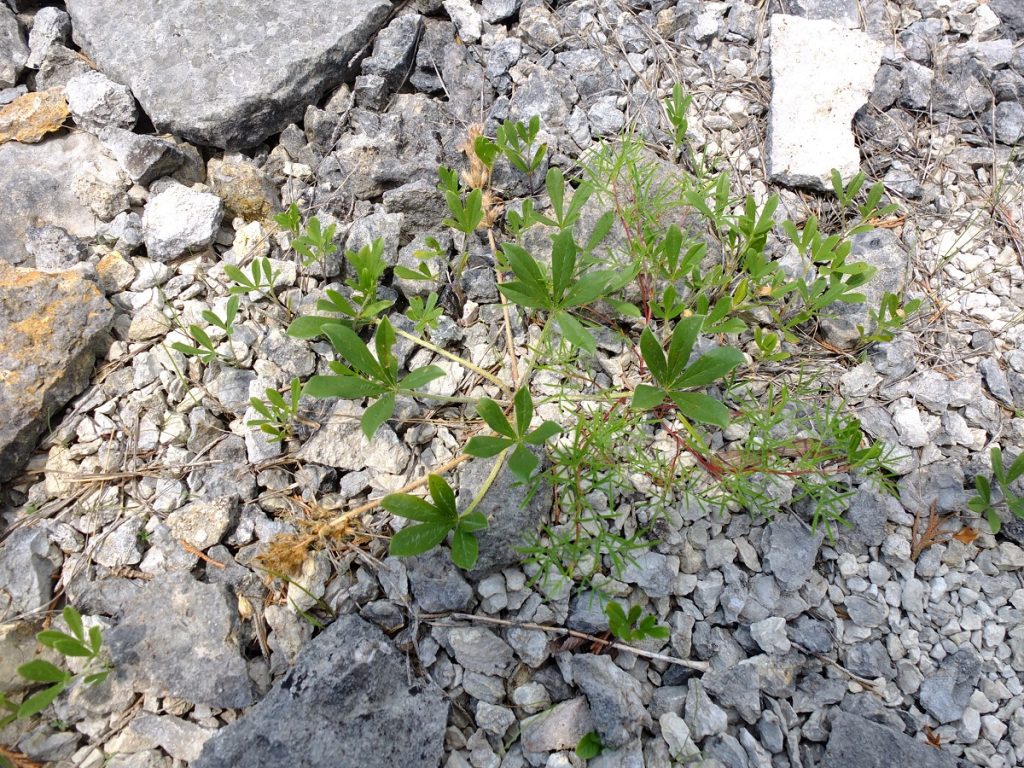
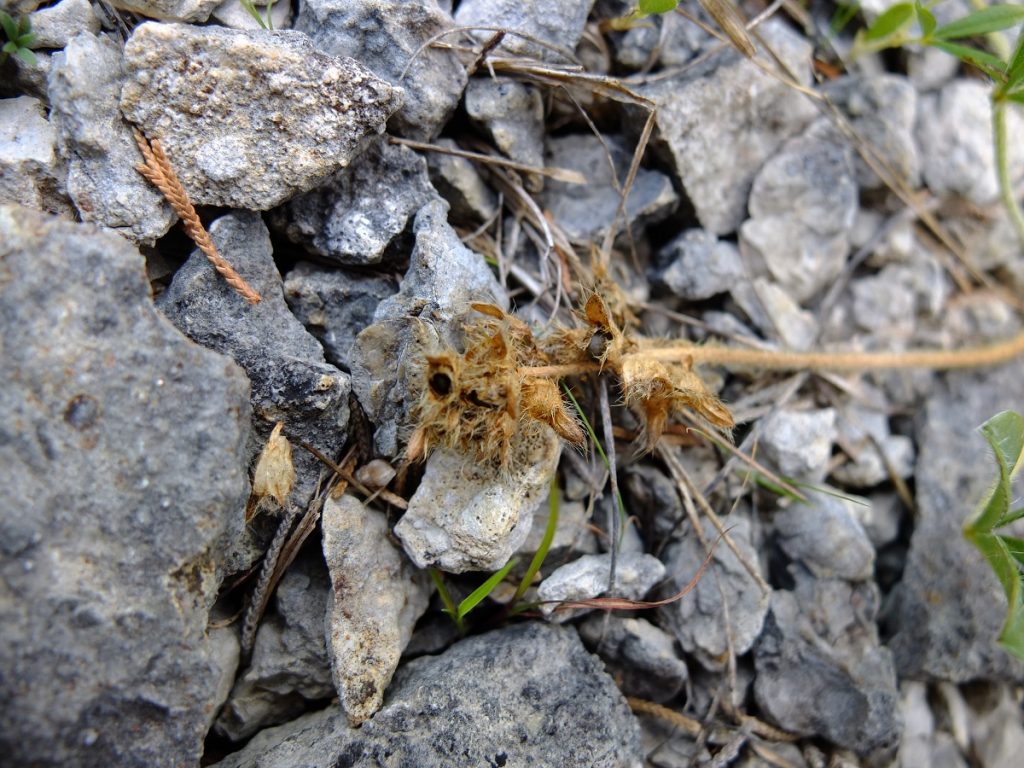
Where were you when you harvested these and took these pics?
Near Smyrna, TN. — Z
There are tons in the rocky glade across the road from my farm. Very pretty right now.